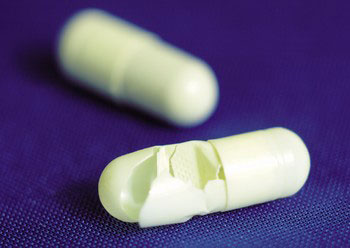 |
|||
|
The diminishing value of the Physicians' Desk Reference and drug package inserts as a medical and legal standard of medical usage of pharmaceutical drugs
The PDR constitutes a collection of the package inserts of many of the available medications as well as a picture of the stated drug. The PDR is provided free to physicians and is sold for profit by Thomson Healthcare to various entities such as hospitals, nursing homes, and the general public through bookstores. The PDR is not a coherent discussion of the various drugs and their applicability to medical conditions, nor does it provide any discussion as to which drug may be preferred in certain situations. Rather, it presents a hodgepodge of information about individual drugs, and arranges them alphabetically by the name of the pharmaceutical company. It does not necessarily report recent information as the information may or may not have been revised from when that particular drug was first released for sale. In short, it is basically a paid advertisement by the pharmacological company and approved by the FDA. The PDR provides a thorough list of adverse effects of all drugs, but does not furnish a percentage of occurrences of any of the possible consequences. The list is so unmanageable and cumbersome that it offers little assistance to physicians, and certainly gives little solace to patients' concern for safety. This preposterous list of adverse effects appears to be for reduction of legal liability of the pharmaceutical industry and/or for the patients and lawyers wishing to play the lotto litigation game. The drugs in the PDR are indexed by product name, category, and generic and chemical name. Several shortcomings are inherent in such an index method. To locate the drug information quickly, one must know the proper spelling of the drug or know the pharmaceutical company who distributes it. Looking up a drug via the category index can be frustrating. For example, if one is seeking a drug to treat pinworms, one must know not to look under the letter "p," but rather search under "anthelmintics."Of note, many drugs may be listed in the PDR index, but no information concerning the drug is provided, save for the company which makes the drug. In dermatology, examples would include spironolactone and sulfasalazine (Azulfidine). An overwhelming number of prescription products are not even listed in the PDR as most of the smaller dermatologic pharmaceutical companies are not even listed in the book. Even the larger dermatology pharmaceutical companies often do not list their entire fleet of products. In short, these companies do not find financial benefit from having their name and/or products listed in this publication given the cost for inclusion in the PDR. The PDR and package inserts are supposed to be a physician's guide for the judicious use of pharmaceutical agents. It is not functional in this capacity. For example, if physicians do not have ready access to the information contained within the package insert, how can they be expected to know the contents therein? The PDR and package inserts are not a reliable means to gauge any physician's standard of usage of pharmaceutical drugs, nor should it be considered the sole legal standard of medical care. References 1. Burkhart CG, Burkhart KM, Burkhart AK. The Physicians' Desk Reference should not be held as a legal standard of medical care. Arch Pediatr Adolesc Med. 1998;152:609-10. Craig G. Burkhart, MD, MPH Clinical Professor, Medical University of Ohio at Toledo; Clinical Assistant Professor, Ohio University School of Osteopathic Medicine, Sylvania, Ohio We welcome submissions to the "Letters to the Editor" section in every issue of the journal. We encourage every skin care professional to consider submitting articles, comments, critiques or suggestions on any subject impacting the JDD or the field of dermatology. Letters to the editor should be no more than 700 words with no accompanying figures or references. |
Copyright 2025 Medical News and Healthcare Software. All rights reserved.
|

 In the legal arena, the Physician's Desk Reference (PDR) is often held to be the standard for medical usage of pharmaceutical drugs. (1) It is used by attorneys as a resource to support testimony that a certain adverse effect can occur with a drug and that the manufacturer or physician knew or should have known about it. It is used as an impeachment tool if a pharmaceutical manufacturer or physician denies knowledge of a particular adverse effect or disputes the existence of the adverse effects.
In the legal arena, the Physician's Desk Reference (PDR) is often held to be the standard for medical usage of pharmaceutical drugs. (1) It is used by attorneys as a resource to support testimony that a certain adverse effect can occur with a drug and that the manufacturer or physician knew or should have known about it. It is used as an impeachment tool if a pharmaceutical manufacturer or physician denies knowledge of a particular adverse effect or disputes the existence of the adverse effects.